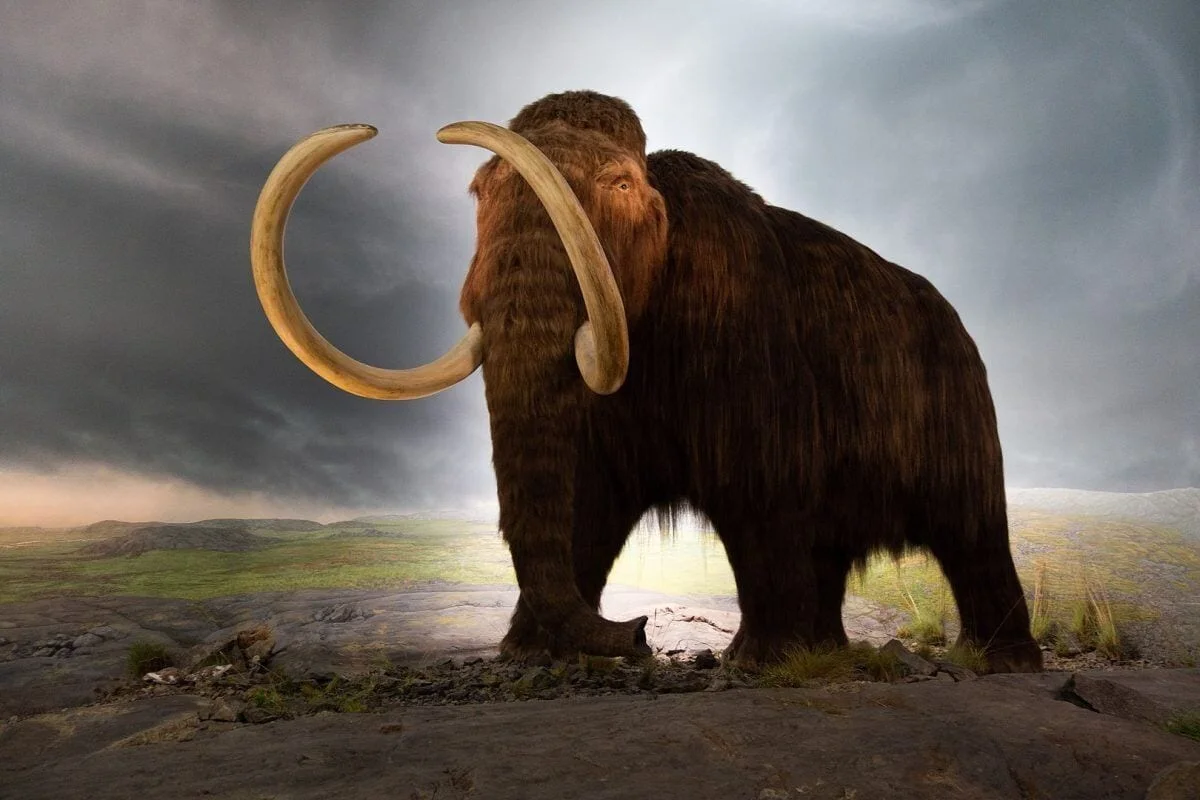Mammoth is a term used to describe the various species from the now extinct genus elephantid mammuthus that existed from the Pliocene epoch around 5 million years ago through to the Holocene between 3700 and 4000 years ago.
Mammoths could be found across the continents of North America, Africa, Europe and Asia but most species died out along with many megafauna around the time of the last Quaternary glaciation during the last glacial retreat 10,500 years ago.
Various theories have been proposed to explain why the mammoth vanished, from climatic events causing rising sea levels, an infectious disease, changes in the fauna, and habitats to the spread of humans hunting the mammoth. There is no definitive explanation, but it could be a combination of some, or all the proposed theories suggested.
Some small groups of mammoth genus survived the mass extinction in isolated pockets, with the most widely known being woolly mammoths. The woolly mammoth coexisted with early humans across Eurasia and North America, where Neolithic hunters used their bones and tusks for making art, weapons, tools, dwellings, and food.
The woolly mammoth is among the best-studied of any prehistoric animal because of frozen carcasses in Siberia and Alaska, as well as skeletons, teeth, stomach contents, dung, and depictions from life in prehistoric cave paintings.
It vanished from the mainland around 10,000 years ago, but continued to survive on Saint Paul Island until 3,750 BC and the last known population on Wrangle Island around 2000 BC, at which time the late Neolithic and early Bronze Age civilisations had already constructed Stonehenge, the Ziggurat of Ur and the Great Pyramid of Giza.
Wrangel Island is located on the north-eastern fringes of the Russian Federation, separated from the main continent by the Long Strait at the conjunction of the East Siberian Sea and the Chukchi Sea.

The isolation of this remote arctic island created a reduced genetic diversity, resulting in a small population and recurrent interbreeding which resulted in mutated genes. Research published in 2017 suggested that the Wrangle woolly mammoth essentially experienced a genetic meltdown in their DNA consistent with nearly-neutral genome evolution.
A study in 2020 by the University of Buffalo synthesized mammoth genes from the Wrangel mammoth and compared that to the DNA from modern-day Asian elephants and mammoth genes from larger populations on the continent.
Their study revealed that the Wrangle mammoth had distinct mutations specific to their population and this caused diverse behavioral and developmental defects such as diabetes and a low sperm count that would be a contributing and possibly the reason for their eventual extinction.
Header Image Credit : Thomas Quine





